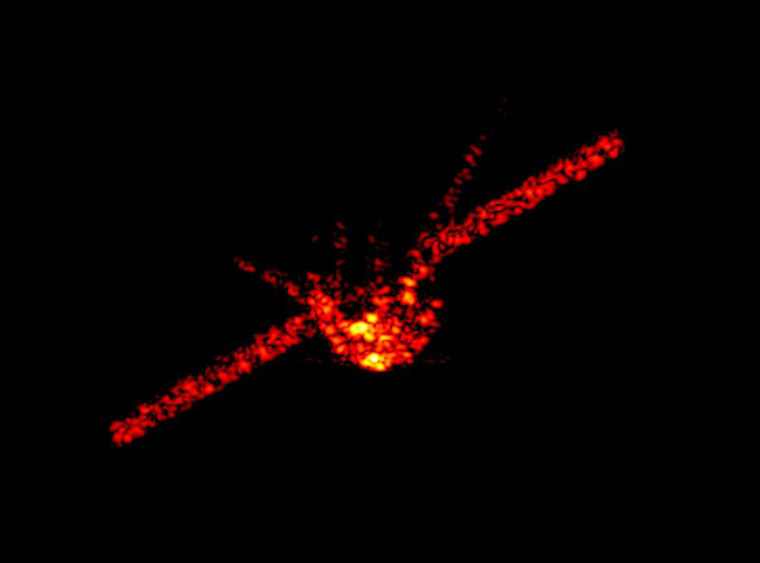A defunct Chinese space station plummeted through Earth's atmosphere on Sunday night, and officials said debris from the 18,000-pound spacecraft landed in the Pacific Ocean.
In a statement, U.S. military officials said the Tiangong-1 space station reentered the atmosphere at 8:16 p.m. ET.
Whatever remained of the craft fell in the South Pacific, between California and Hawaii — "out in the middle of nowhere, which is exactly where we hoped it would land," said Roger Thompson, a senior engineering specialist with Aerospace Corp. of El Segundo, California, which works closely with NASA and has been tracking the space station since 2016.
If someone had been in a nearby ship, he or she would have seen the estimated 10 percent to 40 percent of Tiangong-1 that likely survived re-entry careening through the sky, on fire and still in formation, Thompson said.
"It would look like several dozen comets that were streaming along," he told NBC News. Gradually, the pieces would spread out and plunge into the water.
Aerospace Corp.'s prediction of when that would occur was off by only 14 minutes, Thompson said. The group had said it would happen just west of Chile at 8:30 p.m. ET.
Researchers had been closely monitoring the Tiangong-1 for months as Earth's gravity pulled it lower and lower in its orbit. Although there was a lot of uncertainty about where and when it could fall, experts maintained that the out-of-control spacecraft posed little risk to people on the ground.
"Since the beginning of the space age, we've counted about 6,600 of these uncontrolled reentries for any type of spacecraft, and out of these 6,600 cases, there have been only 70 where pieces have been found on the ground that were unambiguously identified as coming from a spacecraft," said Stijn Lemmens, a space debris analyst at the European Space Agency, which has been tracking Tiangong-1.
China launched Tiangong-1, which translates to "Heavenly Palace," into orbit in 2011. While operational, the prototype space station played host to Chinese astronauts on two separate missions. It's been empty since 2013, however.
China was tight-lipped about whether it could still control the station, but officials told the United Nations in 2017 that Tiangong-1 had "ceased functioning."
It's not altogether uncommon for out-of-commission satellites, rocket parts and other pieces of space debris to fall from orbit. Typically, those objects will burn up as they reenter Earth's atmosphere, but occasionally pieces of debris will survive the fiery journey and fall into the ocean — or, less frequently, over land.
"Some components made of heavy or very heat-resistant material — for example, titanium — are likely candidates for surviving reentry," Lemmens said. "These are designed to handle a lot of heat and take a lot of pressure."
But more than 70 percent of Earth's surface is covered by water, so it's unusual for uncontrolled reentries to occur over land and even more unusual for them to be dangerous.
Only one person — of Tulsa, Oklahoma — is known to have been hit by space debris. Williams was struck on the shoulder by a piece of a rocket's fuel tank in 1997 while she was out for a walk, but she was uninjured.
